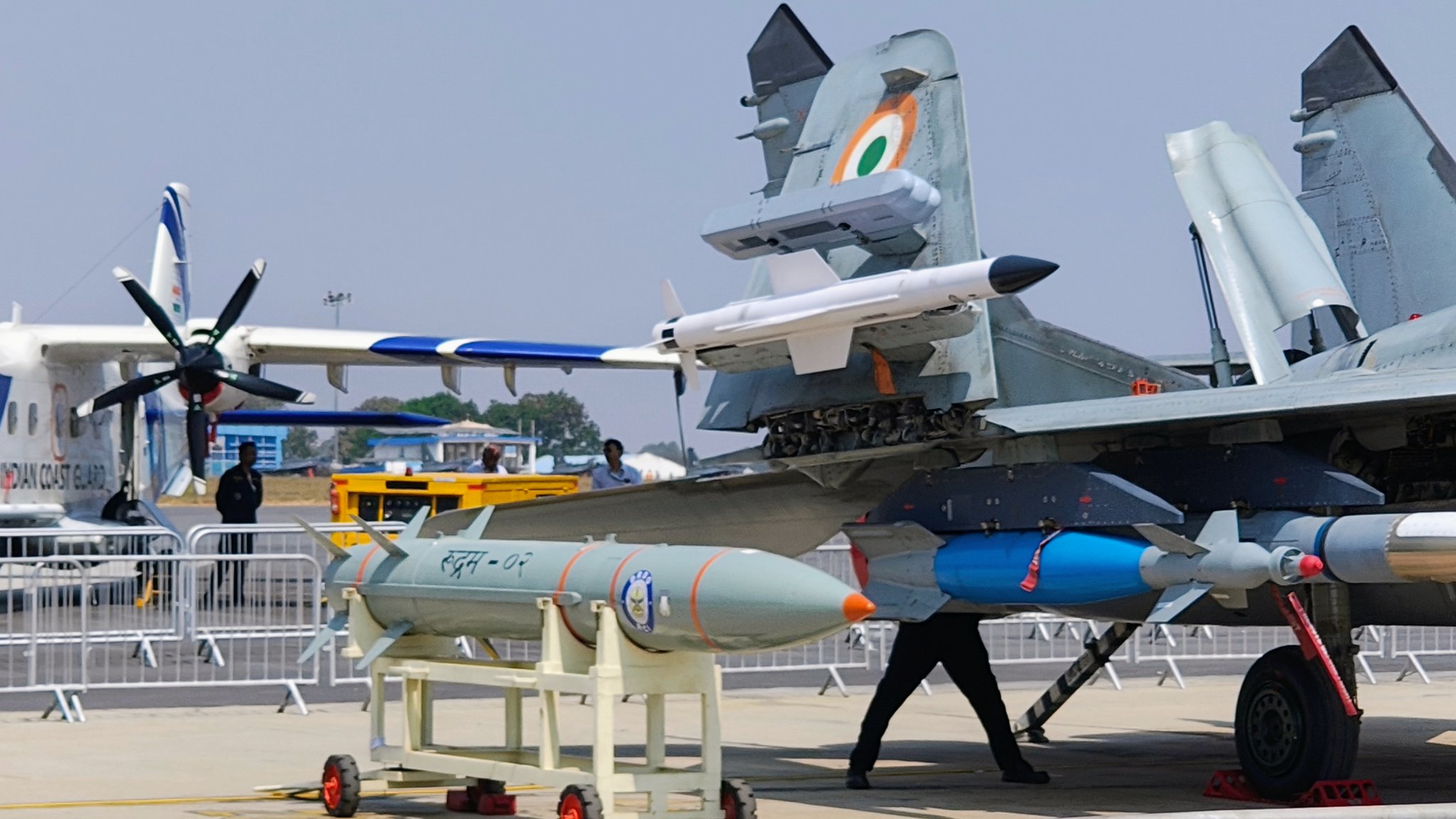SOURCE: AFI


At Aero India 2025, a significant display of India’s growing self-reliance in defense technology was witnessed as the indigenously developed RudraM-II Air-to-Surface missile was seen positioned near the Indian Navy’s MiG-29K. This visual confirmation indicates that RudraM-II, designed to neutralize a variety of enemy assets, is on track to be integrated with the naval fighter jet, expanding its tactical capabilities.
The RudraM-II is designed to be a game-changer in India’s air-to-surface missile capabilities, adding a significant edge to the Navy’s ability to target and neutralize enemy radar systems, missile defense installations, and other critical infrastructure from both low and high altitudes. It promises to enhance the Mig-29K’s strike capabilities, further strengthening India’s naval air power.
The RudraM-II is an advanced air-launched missile intended for the air-to-surface role. It is designed to pick up enemy radio frequencies and radar signals from a significant distance of over 100 km, which enhances its ability to detect and target enemy radar systems, making it highly effective against modern electronic warfare systems.
The missile’s solid-propellant engine allows it to fly at high speeds and altitude, making it an ideal choice for launching from both high-altitude and low-altitude platforms, providing unmatched flexibility during combat operations. It also has an internal guidance system that allows the missile to self-direct toward the target after launch, giving it a high degree of accuracy even in dynamic combat conditions.
Currently, India’s air forces operate the Russian-made Kh-31 anti-radiation missile, which has been an integral part of India’s anti-radiation strike capability. However, the RudraM-II is set to replace the Kh-31, offering more advanced features, including its Lock-On-Before/After-Launch (LOBL/LOAL) capabilities. This will allow the missile to be launched even before the aircraft has locked onto the target, improving operational flexibility in complex combat scenarios.
Replacing the Kh-31 with the RudraM-II will provide India with a missile system that can engage a wider range of target types, including radar systems, communication infrastructure, and missile defense systems, enhancing the country’s electronic warfare and anti-radiation strike capabilities.
NOTE: AFI is a proud outsourced content creator partner of IDRW.ORG. All content created by AFI is the sole property of AFI and is protected by copyright. AFI takes copyright infringement seriously and will pursue all legal options available to protect its content.